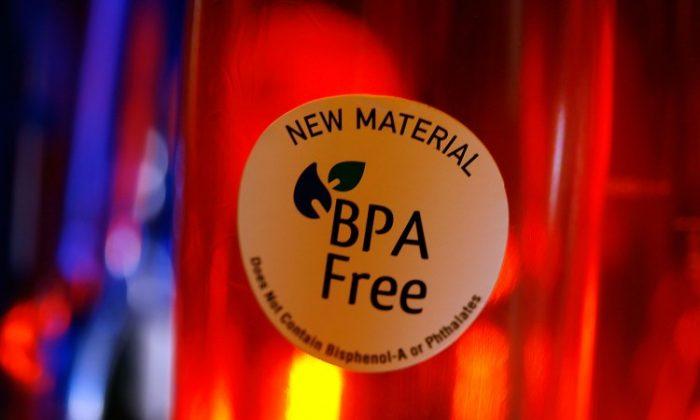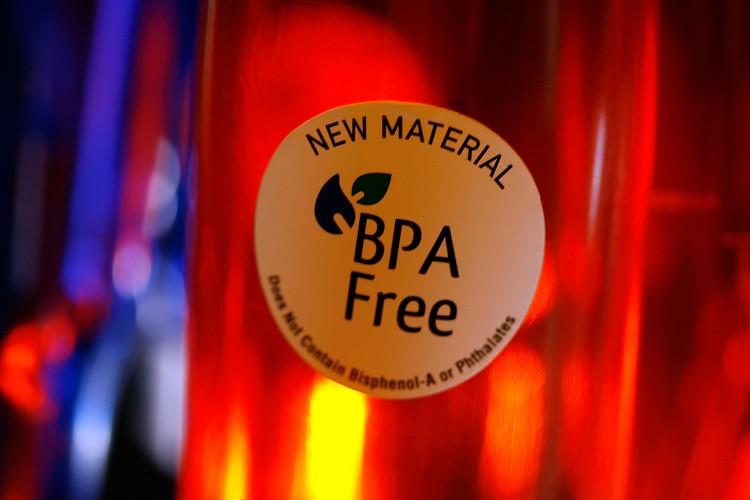Every day in the industrialized world, we ingest small amounts of Bisphenol A, better known as BPA. One of the most widely used synthetic chemicals in industry, BPA can be found in everything from water bottles to food can liners, from children’s toys to register receipts.
After years of careful evaluation, regulators insist it is safe.
Manufacturers have been using the chemical for over 40 years, but recent research has raised concerns. Animal studies suggest that BPA exposure is linked to reproductive disorders, diabetes, cardiovascular disease, and other problems.
Human studies point to more complex issues. Last year, researchers at Harvard found that gestational BPA exposure was linked to behavioral problems, and other studies suggest that BPA increases the risk of obesity.
However, there is a contentious debate over what the research actually means. The chemical industry maintains their confidence that BPA presents no dangers, but many prefer to play it safe. China, Canada, the European Union, and 11 states have all banned the use of BPA in children’s products.
The industry has been resistant, but public demand has forced change.
Earlier this year, Campbell’s Soup announced that it will phase out the controversial chemical from their packaging, and this summer, the American Chemistry Council’s (ACC) request for an industry-wide BPA ban in baby bottles and sippy cups was approved by the Food and Drug Administration (FDA).
The companies made it clear that their decisions were meant merely to calm consumer fears, and that their decisions were not because their products present any hazards. According to a press release from the ACC, “The consensus of government agencies across the world is that BPA is safe for use in food-contact materials, including those intended for infants and toddlers.”
Consumer advocates and environmental groups are pushing for even greater BPA restriction, but the FDA said that unless they see solid evidence of toxicity, they will not give in to public pressure.
“We make public health decisions based on a careful review of well performed studies, not based on claims or beliefs,” said Dr. Dennis Keefe, director of the FDA’s Office of Food Additive Safety, in March 2012.
Regulators promised to keep an eye out for conclusive evidence, but a leading endocrinologist said that standard toxicity evaluations will always miss the big picture.
Dr. R. Thomas Zoeller is a professor at the University of Massachusetts and a representative for the Endocrine Society—the world’s oldest, largest, and most active organization devoted to clinical hormonal research. Zoeller said that because the regulatory community looks at toxicity in a very narrow way, they are unable to see the problems with BPA.
“Their strategy works great for general toxins like ethanol—it has a linear dose response, and when you do high dose testing, you can easily extrapolate to what’s going to happen at the low dose.” said Zoeller. “But with endocrine disrupters it doesn’t work like that.”
As the name suggests, an endocrine-disrupting chemical causes problems in the body’s hormonal system. Because endocrine sensitivities and genetics vary so widely, a hormone-disrupting chemical like BPA can present a wide range of symptoms and severity.
According to Zoeller, a big part of the controversy over whether BPA is harmful is that independent scientists study it from the context of the dynamic hormonal system, while the FDA approach is strictly black or white—either it is toxic, or it is not.
“I think it’s abundantly clear: The regulatory approach is very static,” said Zoeller. “They have a very bright line around a box, and the toxicity has to reveal itself as being very stereotypical. If it’s not—if it varies from that—then it falls outside the definition of toxicity.”
According to Zoeller and others, the only way to effectively evaluate BPA and other endocrine disrupters is in “a context within the endocrine system that it affects.”
The Natural Resources Defense Council (NRDC) agrees. When the FDA declined a petition to ban BPA earlier this year, the NRDC said that federal regulators were “out-of-step with scientific and medical research” and called for a major overhaul in how the government protects people against dangerous chemicals.
Zoeller said that regulators are not solely to blame. According to him, the laws that define a “valid toxin” for the purpose of regulation are too narrow in scope to begin with.
“Those laws really put the industry (the chemical manufacturer) in the driver’s seat,” said Zoeller. “And a lot of times, the EPA and FDA don’t have much of a choice. In fact, the legislation defines what the criteria are.”
The Epoch Times publishes in 35 countries and in 19 languages. Subscribe to our e-newsletter.








Friends Read Free